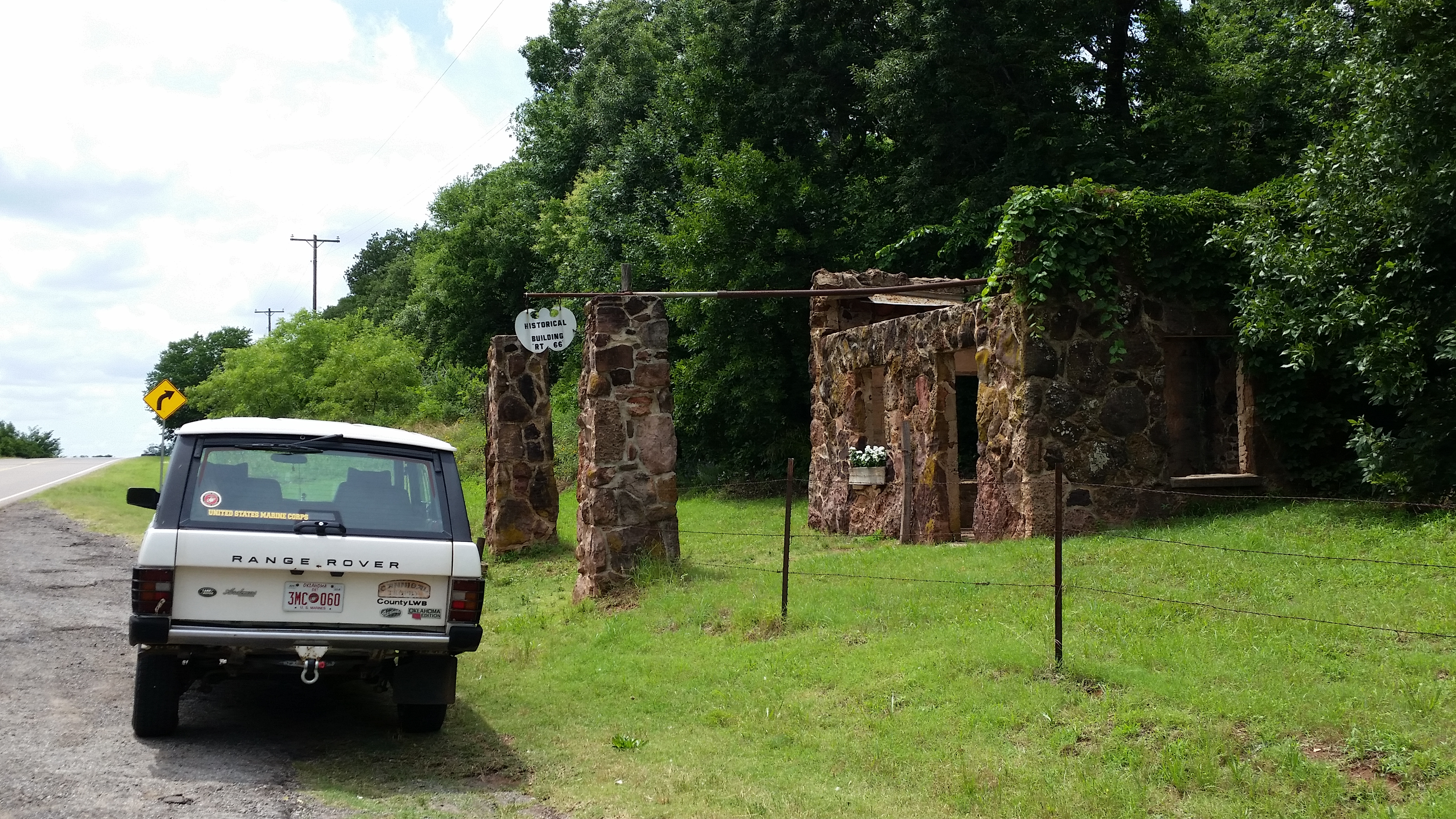I was invited by my friend Correy Twilley to come to Fort Sill and participate in a WW2 living history event. The plan was to take the M3 Half Track and a Jeep with a Pack 75 howitzer out to the field and and have students and family come by and learn some history. Unfortunately the weather for Saturday would be pretty nasty. For dedicated living historians that’s not a big deal but the purpose was to have visitors. Not likely to have many visitors when the north wind blows in the 20mph range, rain falling, and temps in the middle 30’s Fahrenheit (1 to 5 Celsius).
World War 2 is not one of my current periods. I would have had to borrow my entire kit. But Correy said not a problem, so I said, “let’s do it”. When he cancelled I told him I still had the day off and would like to come down and visit the training facility.
If you are following the news, they are deploying some anti-aircraft units from Fort Sill to the Middle East. So I was at first concerned I would be in the way. Turned out not to be a problem as most of the troops were already getting their trashed gather up for deployment. Correy taught a class that morning and had a meeting but the afternoon was available for us to tour the displays.
Friday was pleasant with sunny skies so I toured the gun park. There were several examples of weapons I trained on in the park.

I trained on the M101A4 at artillery school. Fort Sill is home to the Artillery School now, but when I served there were two schools, Camp Pendleton and Camp Lejeune. They sent me to Las Pulgas, Camp Pendleton.

After school I was assigned to 5th Battalion, 14th Marines, Oscar Battery. We were using the M110A2 howitzer. This beast was a very accurate system and nuclear capable.

In the infinite wisdom of the Corps they sent our M110s to California changed our unit designation to 2nd Battalion, 14th Marines, Fox Battery. These towed behemoths required modern trucks (M939) to pull them. I was not a fan.
When Correy was finished with his classes he gave me a tour of the training facility. As you will see in the video, they have an amazing collection. Several of the systems are 1 of a kind or there are less than 3 of these known to exist. Several of the trucks and Jeeps are near fully functional and could be taken out if a little work was done on them. Several of the systems are demonstrated for students with live fire exercises.
As promised, Correy said we would take the M16 Half-track out for a spin. It is an M3 based Multiple Gun Motor Carriage equipped with the Maxson M45 Quadmount (specifically the M45D) with four M2HB machine guns. Our first stop was to drive it to the gas station and put in a couple of gallons. The looks on people’s faces when you roll up to the station is pretty fun. After that we took it over to Medicine Man Bluff and then around the old post and finally back to the museum.
I’m looking forward to the next opportunity to go down to the base and to go out in the field with my friends. The weather has turned cold. Seems like we skipped Fall all together this year and went from 90’s to 30’s Fahrenheit in two days.
Thanks for your patience while we went to St. Croix for a week. We needed the break and took a lazy week to recover from work and life. I did manage to see 5 Land Rovers on the island. You can see them on my Instagram account.
I’m working on the backup fuel pump and plan to get the BWB started and turned around in the shop. That will allow me to tackle the rust on the passenger (starboard) side. I’ll have another video up next week.
Like and or subscribe to the Youtube channel, every little bit helps. As always, I’m happy to see comments and will comment back as soon as I see them.
Thanks for visiting and Happy Rovering.


























 The Courtright Family Reunion was this past weekend. I am a Courtright on my biological mother’s maternal side. Mrs. Okierover normally attends this yearly event with me. This year a church carnival demanded her time. So traveling solo gave me an opportunity to drive the Big White Bus to Stillwater, Oklahoma and as you can imagine, I took the “back roads”.
The Courtright Family Reunion was this past weekend. I am a Courtright on my biological mother’s maternal side. Mrs. Okierover normally attends this yearly event with me. This year a church carnival demanded her time. So traveling solo gave me an opportunity to drive the Big White Bus to Stillwater, Oklahoma and as you can imagine, I took the “back roads”.